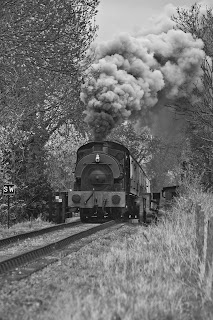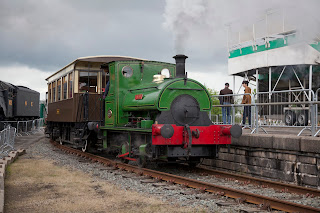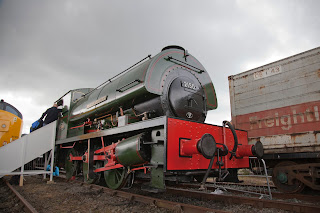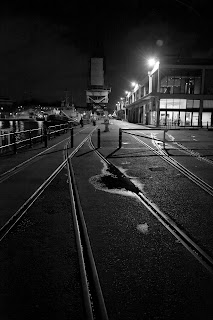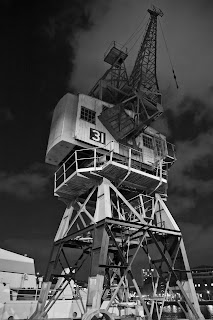I must apologise for lack of blog updates over the last few months I have been too busy with other Internet based projects.
As well as keeping my Flickr site up to date I'm also setting up a photography business , but more of that when it's ready to be launched
Anyway back to the Blog.
This year for me has been the year of the Thumper, these are the diesel units which were used on the Southern region of British Railways.
Initially designed to be a stopgap measure until some lines could be electrified these units were based upon conventional electric units with a large engine fitted to provide power.
The most famous of these are the Hastings units, these were unique as the Hastings Line was built to a reduced loading gauge so therefore all locomotives and coaching stock which traversed the line had to be built to a narrower profile.
These units lasted in service until the line was electrified in the mid 80's, at the same time of electrification the tunnels were singled to give a wider loading gauge enabling conventional trains to traverse the line
The Hastings units had 3 separate classes all to the untrained eye being identical.
The first 7 units No's 1001-1007 were built on underframe's of 56ft 11 ins giving an overall length of 58ft and a unit length on 358ft 9 1/4 ins
These were classed as 6S or later became Class 201
Most enthusiast's know about the preserved Hastings unit on the main line but what isn't realised is the current unit 1001 is a hybrid from 3 separate units.
The above image is vehicle 60001 from the first unit 1001 which is preserved by Hastings Diesels Limited at their base at St Leonard's, this vehicle is still the condition it was when withdrawn in 1985.
The Second class of Hastings unit was the 6L or 202 units 1011-1019, these were built on underframe's which were 64ft 6ins long with each vehicle being 64ft 6ins and a total unit length of 397ft 9 1/4ins.
these were only noticeable by the amount of windows in the passenger compartments 4 instead of 3 in the motor cars and 8 not 7 in the trailers
This shot shows the main line unit with Power Car 60018 originally from unit 1013, the whole train is seen passing through the station at Reading which is currently undergoing a major rebuild
The third and final type of Hastings units were the 6B's or 203's units 1031-1037 these were identical to the 202's with the exception that one of the second class trailers was replaced by buffet cars, the main drawback of having the buffets was when formed into a 12 car units there would have been two power cars nose to nose in the middle of the train and therefore was impossible for people to walk through the train. All the buffet cars were withdrawn by 1980's and replaced by vehicles from withdrawn units.
It is surprising that 2 former buffet cars still survive and both vehicles had amazing histories after being withdrawn from general service
The first is 60750 from unit 1031, after being dumped for a few years it was taken over by the APT project as an experimental platform for the tilting train.
60750 or Lab4 as it was now known became the first vehicle to be tilted on any main line.
Another buffet to survive is 60755 which was converted into an inspection saloon and still travels around the country being hauled by a locomotive.
This vehicles claim to fame is that it was used to convey Charles & Diana on their honeymoon
The class 205's
These are the most common of the DEMU type totalling 33 in all were built to the conventional loading gauge looking almost identical to the EPB commuter EMU
Built as a stop gap measure it was intended that these would be converted into conventional electric units but when the final withdrawal came in 2004 it was over 40 years since introduction and the routes the trains ran over were still un-electrified.
They were finally replaced by conventional diesel units
The photo above is of unit 1125 or 205025 as it later became which is a regular performer on the Mid-Hants Railway. it has been restored into the 1960's green livery and is a regular performer on the line
The of the main types were the 207's
Due to some loading gauge restrictions in the Oxted area were built to a width of 8ft 6ins as oppose to the 9ft of the 205's or the 8ft of the Hastings units.
Not many of these units survive with there being only 3 complete units to survive and one individual power car.
The unit above is 1317 or 207017 which made its debut in preservation in 2012.
It has been fully restored inside and and out and done to a very high standards and must be the best preserved thumper out there.
When I saw it the trailer car hadn't been finished and was running in primer, there was a delay in finishing die to the bad weather experienced this year.
If your visiting the Tumbridge Wells area the near future make sure you go to the Spa valley Railway to see 1317


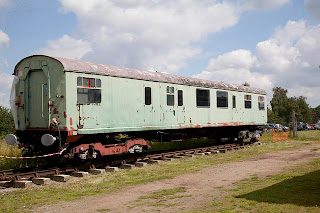

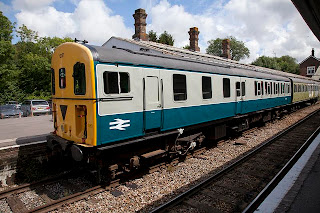


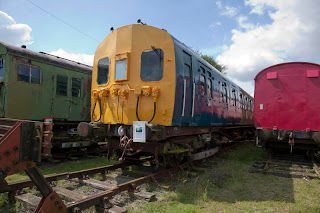
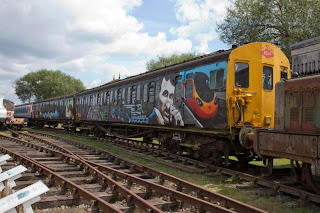
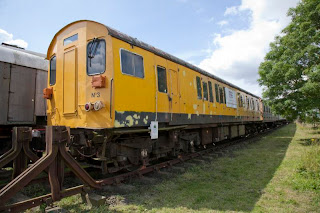

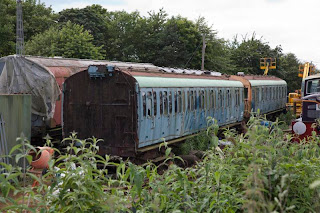
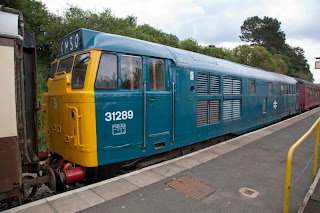


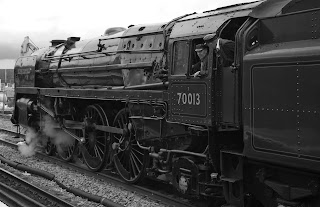

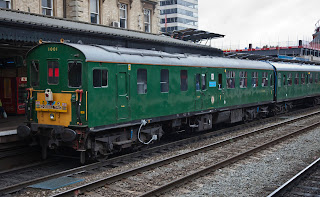
+COCKFOSTERS-01.jpg)
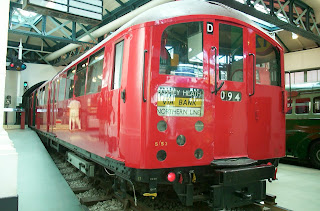
+RYDE+DEPOT-1-.jpg)
+DINO+LIVERY+RYDE+PIER-01.jpg)
+LT+Red+Ryde+Pier+2012-06-19_10.jpg)
++SCRAPPED+BODY.jpg)
SCRAP+BODY-3.jpg)
